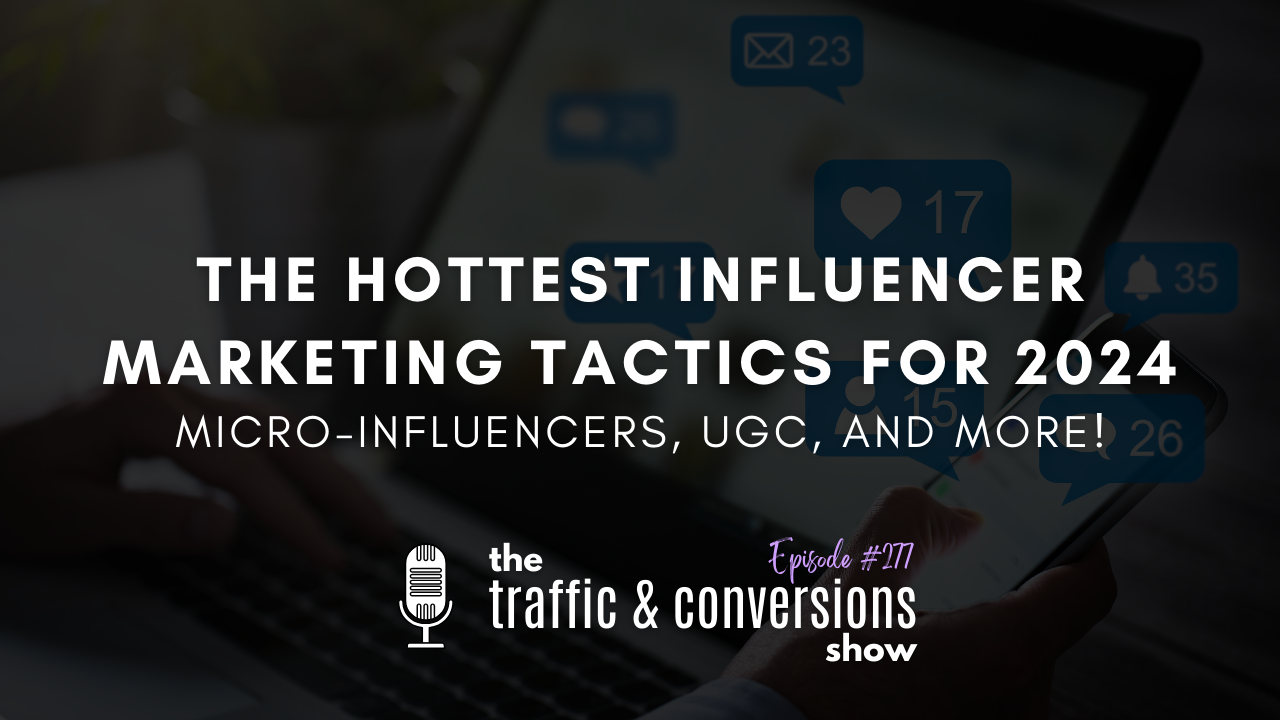Social media has transformed the way people make purchasing decisions. The celebrities and top influencers that people follow on social media have a HUGE impact on the products and services they choose to buy. So for us as marketers, that makes influencers a great choice to build awareness of our brands and to promote our products.
But as influencer marketing continues to evolve, there’s still some uncertainty about how to harness its power. One thing is for sure though: partnering with influencers gives you direct access to engaged audiences who trust their recommendations.
So today, we’re diving into three key strategies for successfully collaborating with influencers in 2024 and exploring some real world case studies that exemplify these approaches.
The Growth of Influencer Marketing
Influencer marketing has come a long way since its inception, and it continues to reshape the landscape of digital marketing. So to understand the current state of influencer marketing and where it’s heading, let’s first take a look at some of the lessons learned from the past:
- Authenticity: In the early days, influencer marketing often focused on celebrities with massive followings. However, brands soon realized that authenticity and alignment with the influencer’s values are crucial for successful campaigns. So in 2024, we see a greater emphasis on micro influencers who have smaller but highly engaged audiences. Their authenticity and relatability make them powerful advocates for the brands.
- Data-driven decision-making: As influencer marketing matured, data-driven approaches became essential. Marketers began utilizing analytics tools to track the effectiveness of campaigns, measure that return on investment, and refine their strategies. So in 2024, AI powered analytic tools are becoming even more advanced, helping marketers identify the right influencers and optimize their campaigns for maximum impact.
- Diversify platforms: In the past, influencer marketing primarily focused on platforms like Instagram and YouTube. Today, successful campaigns span across various platforms like TikTok and Snapchat, as well as emerging platforms that will capture the attention of specific audiences. So it’s crucial for brands to adapt to these changes in order for them to stay relevant.
Influencer Marketing Strategies
Now that we’ve covered some valuable lessons from the past, let’s shift our focus to the strategies and case studies that are shaping the future of influencer marketing.
Strategy #1 Niche Targeting:
In 2024, the influencer landscape is more specialized than ever, emphasizing the importance of niche targeting. Brands are collaborating with influencers who cater to specific audiences, ensuring their message resonates deeply with potential customers and leads to higher conversion rates.
Case Study: Micro Influencer Success
Brand X, a beauty company, partnered with micro-influencer Sarah, who had 20,000 followers interested in skincare. Over six months, Sarah created authentic content showcasing Brand X’s products, resulting in a 300% increase in sales from her audience alone. This exemplifies the power of niche targeting and the impact of authentic collaborations.
Strategy #2 Longer-Term Partnerships:
Short-term influencer campaigns have their place, but longer-term partnerships are gaining traction in 2024. Brands recognize the benefits of building ongoing relationships with influencers who become authentic brand ambassadors, fostering trust and credibility beyond a single sponsored post.
Case Study: Long-Term Ambassadorship
Fashion brand Y collaborated with influencer Alex, sharing the brand’s commitment to sustainability. Over two years, this partnership resulted in consistent content highlighting Y’s eco-friendly practices, leading to a 45% increase in sales and solidifying Y’s position as a sustainable fashion leader. This showcases the enduring impact of longer-term partnerships in building brand loyalty and credibility.
Strategy #3 User-Generated Content (UGC):
UGC is a goldmine for brands in 2024, providing authentic and engaging content created by influencers and customers alike. Encouraging influencers and customers to share content related to the brand not only boosts authenticity but also provides a constant stream of engaging content for social media.
Case Study: Fitfluencers
Fitness brand Z encouraged customers and influencers to share their workout routines using Z’s products, leading to a flood of user-generated content. This campaign resulted in a 25% boost in sales, demonstrating the power of UGC in driving engagement and conversions.
So, let’s keep these key lessons and strategies in mind, and even on your marketing strategy list for 2024 as you navigate the ever-changing landscape of digital marketing.
Consider the possibilities of partnering with influencers who can serve as brand advocates, exposure agents, or influencer marketers for your business. Take the initiative to identify influencers with highly engaged audiences aligned with your brand values, and explore the potential for mutually beneficial partnerships.
In this dynamic landscape, it’s not about competition but collaboration. Seek out partnerships that complement your brand and approach influencers with authenticity and sincerity. By embracing these strategies, you’ll be well-equipped to leverage the power of influencer marketing and elevate your brand in 2024 and beyond!
Want to chat more about how you could make influencer marketing work in your business for 2024? DM me today over at @themichellefernandez to get the ball rolling!
Let’s grow your business together!


